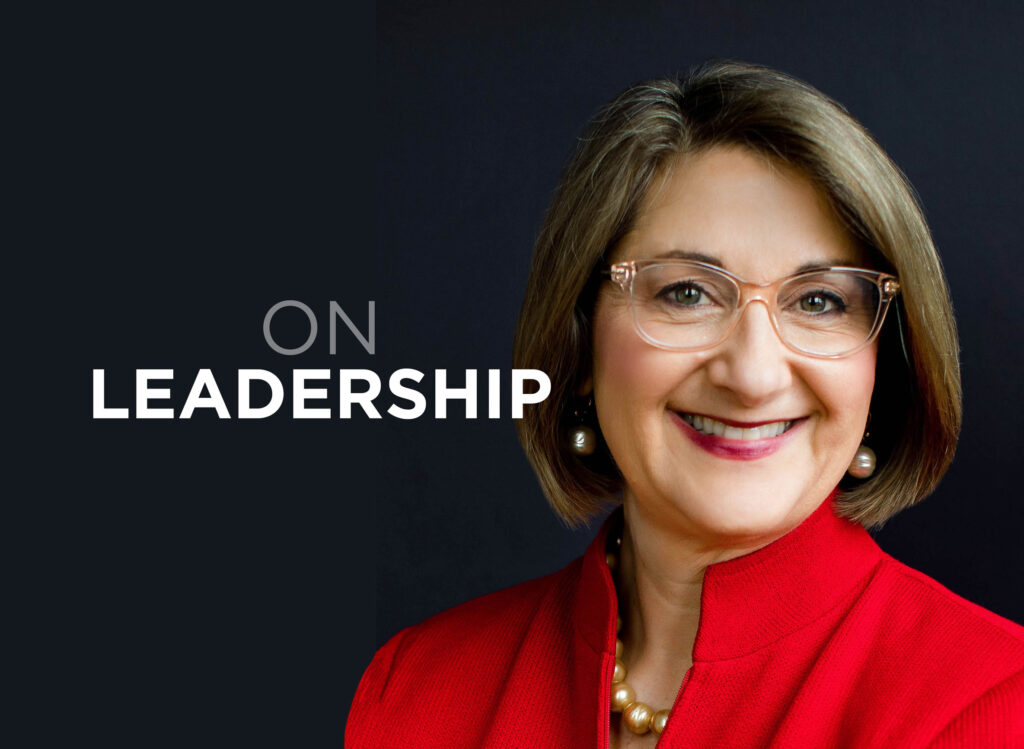On Leadership: Managing people for the first time? Successful leaders offer advice.

When I was a recent college graduate, I got a job leading a nonprofit organization and started managing a team of employees and volunteers. I quickly made numerous rookie errors, one of which was hiring a friend. When I struggled to give her constructive feedback, she took it personally, affecting both her job performance and our relationship outside of work. If I could go back in time, I’d rethink that experience and many other leadership missteps. However, I can now see that we learn how to manage people by doing, making mistakes, watching others, asking for advice, course-correcting and practicing.
Becoming a people leader for the first time can be a major career transition, simultaneously exciting and daunting. When you are managing people, you are responsible for not only your own success, but the success and productivity of others. For first-time managers, learning how to lead and manage can be a matter of trial and error. This can be intimidating and stressful.
A recent survey summarized in the Harvard Business Review underscores how challenging people leadership can be for first-time managers. In that survey, 65% of respondents admitted to “feeling uncertain or anxious about their role transition.”
A Business News Daily article on new people leaders echoes this sentiment, emphasizing that going from focusing on your own work to that of a team can often feel overwhelming.
Regardless, learning to manage people is a critical skill for leaders, and it is a never-ending journey. With practice, you can be effective and even truly enjoy managing others. The Business News authors assert that leading your team, watching direct reports develop and flourish, and finding success can be extremely rewarding.
I turned to several successful leaders and asked what are important considerations for first-time people leaders and advice they wish they’d known when they started managing people.

Jay Byers, president, Simpson College: Be authentic. Be yourself and leverage your strengths. Build a strong leadership team. Know what you know, know what you don’t know, and surround yourself with people who have expertise in areas that you lack. Create a bold vision for the future and inspire your team to achieve greatness. Empower your team to do their jobs and give them the tools they need to be successful. Coach and hold your team accountable for results. Create a culture of genuine appreciation to make sure your team knows they are valued. Overcommunicate with your team and other constituencies. Commit yourself to lifelong learning and continuous improvement. Lead by example.
Byers’ advice: Business author Patrick Lencioni describes ideal team players as humble, hungry and smart. This is excellent advice to consider when hiring and evaluating team members.

Lindsay Cannaday, vice president and business development director, GreenState Credit Union: In my current position, I don’t lead a team; I’m an individual contributor without direct reports. Nevertheless, I see myself as a culture leader within my company and industry, wielding internal and external influence. As a young Black woman in this leadership role, fostering a cultural shift is crucial. I challenge stereotypes, inspiring others to excel regardless of background. Actively shaping an inclusive culture, I create an environment amplifying diverse voices, fostering innovation. My presence contributes to a more representative leadership landscape, breaking down barriers and setting an example for the future workforce. By championing inclusive collaboration, I enhance organizational dynamics and influence positive change in the broader professional community, impacting the trajectory of underrepresented individuals in leadership.
Cannaday’s advice: If I could share advice with my younger self when starting to lead, I’d emphasize the importance of embracing vulnerability. It’s OK not to have all the answers. Admitting uncertainty fosters trust and authenticity within a team. I’d also stress the significance of effective communication – both listening and articulating ideas clearly. Building strong relationships is foundational, and investing time in understanding team members on a personal level is as crucial as understanding their professional strengths. Lastly, I’d encourage a mindset of continuous learning, being open to feedback, and recognizing that leadership is a journey of growth rather than a fixed destination.

Amner Martinez, founder and CEO, Infinite Resources: Hold people by the hand sometimes. You have to encourage them. People need a lot of nudges. You can’t expect people to do something new the first time you ask. Make them believe the pitch just as you believe it. Do what you say you’re going to do.
Martinez’s advice: Learn how to dust things off your shoulder. By that I mean emotionally. My younger manager self could have been more humble. It’s easy to make things about you, but it’s not about you.

Amanda Young, senior vice president and chief human resources officer, Bankers Trust: People are more than what we initially see.
Young’s advice: What I wish I knew early on in managing people is that when you lead others, you must recognize they will create a series of impressions on you. First impressions should always be questioned before you act because they are often wrong. Being curious allows you to suspend judgment and really get to know someone. The more adamant I was about my opinion of someone, the more likely I was making some wrong conclusions. Decisions about people should take infinitely longer than those about a process, product or strategy because of the complexity of the human spirit.

Suzanna de Baca
Suzanna de Baca is a columnist for Business Record, CEO of Story Board Advisors and former CEO of BPC. Story Board Advisors provides strategic guidance and coaching for CEOs, boards of directors and family businesses. You can reach Suzanna at sdebaca@storyboardadvisors.com.






